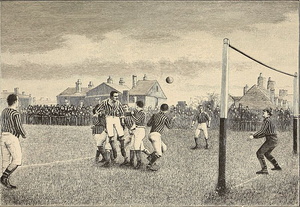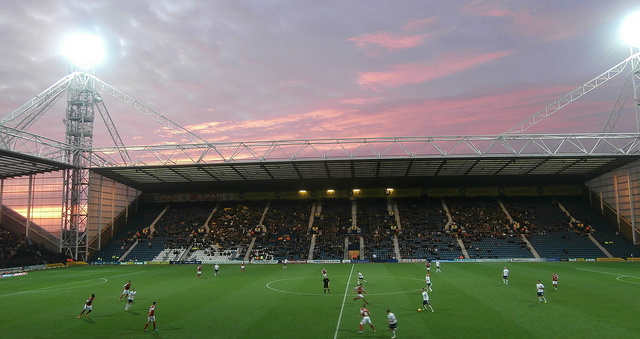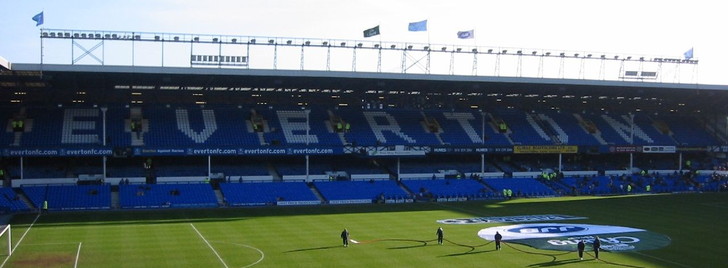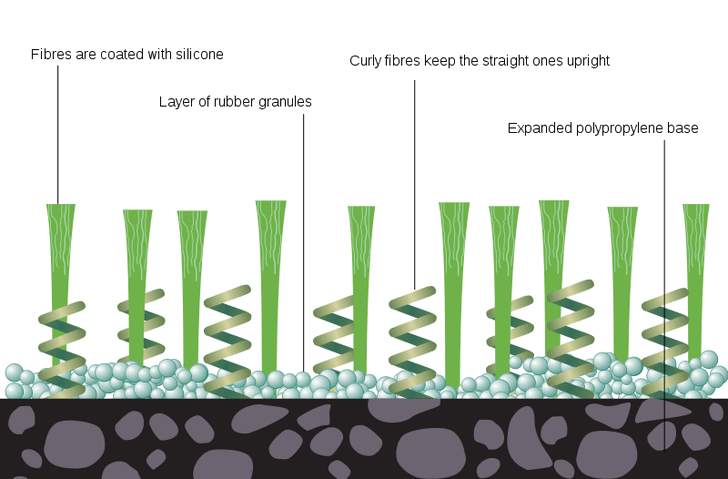 When Association Football first started out as a going concern matches were played on a spare playing field, oftentimes within a public park.
When Association Football first started out as a going concern matches were played on a spare playing field, oftentimes within a public park.
The biggest concern of the players was whether a random passerby would understand there was a match going on and at least have the courtesy to walk around the makeshift pitch.
As the years went by and the professionalism of the game grew and grew so did the need to ensure that the ground that the players were running on was of an acceptable standard. No longer would clubs be able to just brush some rubble off the grass and send the lads out for a kickabout.
But how did the state of the pitch evolve? What were the ‘firsts’ that took pitches from being little more than sectioned off areas of grass to the fantastically maintained things they are in this day and age?
Early Football Pitches
When the game first started there were none of the markings we know and understand on that pitch that we see today. There might be a fence or bollard along the edge of the playing surface to let players know where they could run up to and to inform spectators how close they could get to the action. Other than that there were just two sticks, essentially, at either end of the pitch to point out where the goal was.
As far as the ground itself was concerned, we’re not joking when we say it wasn’t anything more than a suitable looking bit of grass. In most cases the field of play would be a section of a public park that was as straight and even as it was possible to find, though even this wasn’t always a given.
As the game grew in popularity a team might be lucky enough to be offered the use of some private land. When Preston North End moved to Deepdale in 1875 to play their matches they were playing on ground that used be part of a farm and would often encounter problems with the land because of its former life.

Everton Football Club originally played their games in Stanley Park, a public park that is now situated between Anfield and Goodison Park. A member of their team owned some nearby land and allowed the club to play their games there as they began to get more spectators, but in the end he kicked them off his land because supporters were making too much noise. These were the sorts of problems football teams had when the game first began.
In fact, up until 1960 football pitches were just made of regular grass. There was little to get excited about until the second half of the 20th century came about. Some grounds, such as the first purpose-built football stadium of Goodison Park, had drainage system in place, but these were rudimentary compared to the sort of thing you’d find today.
The original pitches required an immense amount of maintenance to keep them in a useable state. There were no enhancements to the grass and soil system, meaning that they were extremely reliant on good levels of light and a regular amount of watering.
Modernising The Football Pitch
In 1958 Goodison Park was the site for another of football’s firsts: Undersoil heating was put in place underneath the playing surface. About twenty miles, or thirty kilometres, worth of electric wire was laid directly under the surface. It cost the club around £16,000 to install and went on to cost them even more money.
The heating system, which stopped the pitch from freezing over, was actually more effective than people thought it was going to be. The ancient drainage system that had been in place under the pitch since Goodison was first built couldn’t cope with the new floods of water it was having to deal with. Consequently in 1960 the pitch had to be taken up and re-laid in order to allow a better drainage system to be installed.

The 1960s also saw the introduction of the first-generation of artificial turf. This was far from the pleasant, almost life-like fake grass we’ve come to know.
Instead it was a low-pile, stiff nylon fibre that was attached to a base of asphalt or concrete. It was first used in the Astrodome in Texas, America.
Professional football first encountered artificial turf when Queens Park Rangers, Luton Town, Preston North End and Oldham Athletic introduced the turf’s second generation to their playing fields in 1980. The fake turf was banned officially from the English game in 1995.
Modern Artificial Turf
In 2001 both FIFA and UEFA decided to begin a quality assurance programme for the development of artificial turf in order to come up with an industry standard for the use of it in football. This resulted in the International Football Association Board tackling the issue of turf in the Laws Of The Game in 2004.
In 2010 4G pitches, which stands for 4th generation rather than your phone reception, began to grow in popularity. These pitches are a hybrid of artificial turf and natural grass that allow pitches to be used for longer without showing signs of wear and tear. The increased use of turf such as the Desso Grassmaster may well have come about because of its success at The John Smith’s Stadium in Huddersfield.

A Desso Grassmaster pitch, which can now be found in most of the country’s stadiums such as Anfield, White Hart Lane and Wembley, was first laid in the home of Huddersfield Town Football Club and Huddersfield Giants Rugby League Club in 1996. The presence of both a football team and a rugby club using the pitch means that it is one of the busiest in the country, but it coped admirably with such regular usage and didn’t need to be re-laid until 2011.
The benefits of a hybrid of real and artificial turf are clear. The maintenance issues that dogged pitches in the early days of the modern game are no longer such a problem. Pitches don’t need to be watered and lit in incredibly specific manners any more and groundskeepers can keep a closer eye on the development of the field of play.
